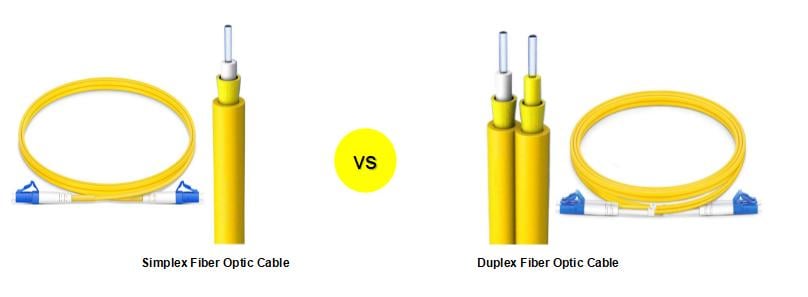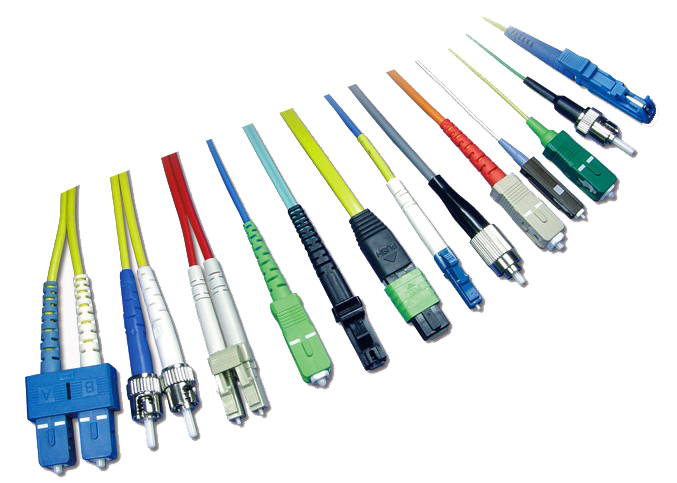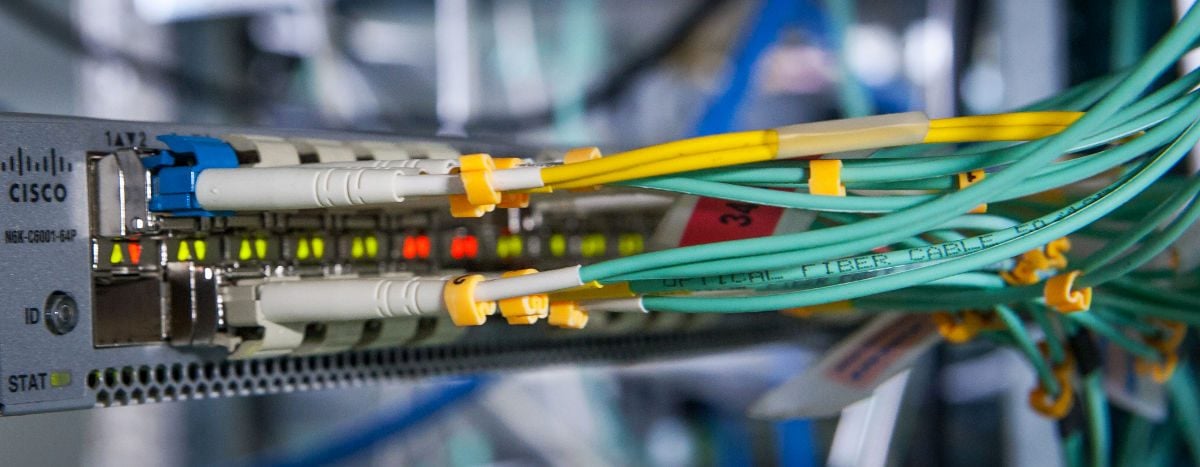In today's rapidly evolving information technology landscape, fiber optic communication has become an indispensable part of our daily lives and work. However, when it comes to fiber optics, we often encounter two terms: Duplex Fiber and Simplex Fiber. What exactly are the differences between these two types of fiber? How should we choose between them?
The world of fiber optic communication is ever-changing, and choosing the right type of fiber is crucial. Whether it's building a high-speed data center or setting up a home security system, the performance of the fiber optic cables directly impacts the quality and efficiency of communication. Are you confused about whether to choose Duplex Fiber or Simplex Fiber? Don't worry, Fibermart is here to help. As experts in the field of fiber optic communication, Fibermart not only provides the highest quality fiber optic products but is also dedicated to offering comprehensive technical support and solutions to our users. Today, we'll take you through the differences between these two types of fibers to help you make the most informed choice. Ready? Let's explore the mysteries of fiber optics together!

What Are Duplex Fiber and Simplex Fiber?
First, let's understand the basic definitions of Duplex Fiber and Simplex Fiber.
Duplex Fiber, as the name suggests, is a type of fiber that can transmit data in both directions. This means it can send and receive signals simultaneously, usually through two fibers—one for sending and one for receiving. This design makes Duplex Fiber highly popular in scenarios that require efficient communication, such as data centers and enterprise networks.
In contrast, Simplex Fiber is much simpler as it only supports unidirectional data transmission. This means data can only be transmitted in one direction, making it suitable for scenarios where real-time bidirectional communication is not critical, such as security monitoring and television signal transmission.
What Are Their Structures and Working Principles?
The structure of Duplex Fiber typically includes two fibers, each with its own sending and receiving ports. This bidirectional transmission design greatly improves data transmission speed and efficiency. In terms of working principles, Duplex Fiber uses the refraction and reflection principles of light in different media to achieve bidirectional communication through the transmission and reception of light signals.

On the other hand, Simplex Fiber consists of only one fiber, with light signals transmitted in a single direction. This unidirectional transmission mode is highly effective in specific application scenarios, such as monitoring the unidirectional data flow from cameras to monitoring centers.
Performance Comparison
Duplex Fiber and Simplex Fiber exhibit significant differences in performance, specifically in the following aspects:
Transmission Speed and Bandwidth: Due to its bidirectional transmission characteristics, Duplex Fiber can provide higher transmission speeds and greater bandwidth. This makes it particularly outstanding in scenarios requiring high data throughput. For instance, in data centers where servers frequently exchange large amounts of data, Duplex Fiber ensures efficient bidirectional communication, keeping data flow smooth. In contrast, the unidirectional transmission mode of Simplex Fiber limits its bandwidth and speed. However, it remains capable in low-bandwidth applications, such as television signal transmission and sensor data uploads, where it performs reliably and stably.
Transmission Distance and Loss: Duplex Fiber, due to its need for bidirectional transmission, may require more relay equipment to maintain signal quality over long distances. Simplex Fiber, with only unidirectional transmission, remains relatively stable in long-distance transmission but its distance is still affected by fiber material and environmental factors. In large-scale international communication projects, Duplex Fiber often requires relay stations to boost signals, while Simplex Fiber can achieve stable transmission over medium to short distances with its simple structure.

Interference Resistance: Duplex Fiber, being more complex in design, demands higher levels of interference resistance and signal stability. In complex network environments, Duplex Fiber can enhance communication reliability through bidirectional signal detection and error correction mechanisms. Simplex Fiber, with its simpler structure, has relatively weaker interference resistance but can still work stably in environments with less interference. For example, in remote communication lines, the simple structure of Simplex Fiber can reduce the impact of external electromagnetic interference, ensuring stable data transmission.
Application Scenarios of Duplex Fiber vs. Simplex Fiber
Duplex Fiber finds widespread application in data centers, enterprise networks, and long-distance communication scenarios requiring efficient bidirectional communication. Its high bandwidth and transmission speed make it the ideal choice for large-scale data transmission. For instance, in data centers, Duplex Fiber is used for data synchronization and load balancing between servers, significantly improving data processing efficiency. Additionally, in the internal networks of large enterprises, Duplex Fiber ensures efficient data exchange between departments, supporting complex enterprise applications.
Simplex Fiber excels in unidirectional data transmission scenarios. For example, in security monitoring systems, cameras transmit video data to the monitoring center via Simplex Fiber, enabling real-time monitoring. In television signal transmission, Simplex Fiber reliably transmits high-definition signals, ensuring viewers receive clear image quality. Moreover, Simplex Fiber is used in some sensor networks to transmit sensor data to control centers, providing accurate environmental monitoring information.
Installation and Maintenance Complexity Comparison
In terms of installation complexity, Duplex Fiber is relatively complex due to its bidirectional transmission design, requiring professional personnel for precise connections and adjustments. For instance, in data center cabling, ensuring correct matching of each fiber port is essential to avoid signal transmission errors. Simplex Fiber, with its simpler structure, is easier to install, particularly in scenarios that do not require frequent maintenance. In setting up television signal transmission lines, Simplex Fiber can be quickly installed, reducing initial construction costs.

Regarding maintenance costs, Duplex Fiber requires higher maintenance costs due to its complex structure and high-performance demands. Regular inspections and maintenance need professional technical personnel to ensure system stability. In contrast, Simplex Fiber has lower maintenance costs due to its simple design but may still need regular checks and maintenance to ensure signal quality in high-demand scenarios. For example, in security monitoring systems, regular cleaning of connectors and line inspections are necessary to ensure video signal transmission quality.
Market Demand for Duplex Fiber vs. Simplex Fiber
Global market demand for Duplex Fiber and Simplex Fiber shows different trends.
With the rapid development of data centers and enterprise networks, the demand for Duplex Fiber is increasing annually. It plays a crucial role in efficient data transmission and communication networks, becoming the top choice for major enterprises and data centers. The growth of cloud computing and big data drives the demand for high-bandwidth, low-latency communication, allowing Duplex Fiber to occupy an important market position with its excellent performance.
In homes and small to medium-sized enterprises, Simplex Fiber remains widely used due to its lower cost and easier installation. Particularly in traditional television signal transmission and small-scale monitoring systems, Simplex Fiber, with its reliability and cost-effectiveness, meets the basic needs of users.
Future Development Trends of Duplex Fiber vs. Simplex Fiber
In terms of technological innovation, Duplex Fiber continuously pushes the limits of transmission speed and bandwidth, promising to play a greater role in ultra-high-speed data transmission in the future. With the development of 5G networks and the Internet of Things, Duplex Fiber will showcase its unique advantages in more emerging fields. For example, in the future construction of smart cities, efficient communication networks are needed to support various smart applications, and Duplex Fiber's high performance will provide a solid foundation for these applications.

Meanwhile, Simplex Fiber is also improving its transmission performance and stability, continuing to maintain its competitiveness in low-cost, low-maintenance application scenarios. With technological advancement, Simplex Fiber is expected to find new application opportunities in more specific fields. For example, in smart homes and smart agriculture, Simplex Fiber can provide stable data transmission channels for various sensors and terminal devices, supporting the operation of intelligent systems.
What Are Their Advantages and Disadvantages?
Duplex Fiber's main advantage lies in its high transmission speed and large bandwidth, making it outstanding in efficient communication. In enterprises and data centers, where large amounts of data need to be exchanged frequently, Duplex Fiber's bidirectional transmission capability provides an efficient data flow path. However, its complex structure and high maintenance costs are potential drawbacks. In projects with limited budgets, the high cost of Duplex Fiber may be a limiting factor.
Simplex Fiber's advantage is its simple structure and low cost, suitable for unidirectional data transmission scenarios. For applications needing low cost and low maintenance, Simplex Fiber is an ideal choice. However, its bandwidth and transmission speed limitations may underperform in high-demand scenarios. For instance, in applications requiring high bandwidth for video transmission and data synchronization, Simplex Fiber may not meet the requirements.
Conclusion and Recommendations
In conclusion, Duplex Fiber and Simplex Fiber each have their unique advantages and application scenarios. The choice of which fiber to use depends on the specific needs and application scenarios. If high-efficiency bidirectional communication and large data transmission are required, Duplex Fiber is undoubtedly the best choice. For unidirectional data transmission and cost-sensitive applications, Simplex Fiber is more suitable. In future developments, we look forward to more technological innovations to drive the continuous advancement of fiber optic communication technology. Whether it is Duplex Fiber or Simplex Fiber, both will continue to play important roles in different application fields, contributing to the development of the information age.
When it comes to choosing fiber optic products, Fibermart's simplex fiber optic cables come in single-mode, multimode, or polarization-maintaining types to meet the strength and flexibility required for today's fiber optic interconnect applications. We also offer riser, plenum-rated constructions, and LSZH jackets to ensure suitable solutions for different environments. Moreover, Fibermart's duplex fiber optic cables also excel, available in single-mode and multimode duplex fibers, offering excellent performance and structural stability. Whether for data centers or enterprise networks, Fibermart's products can meet your high requirements.
There are many reasons to choose Fibermart. As a professional fiber optic manufacturer, we never stop improving our services, including developing methods, engineering practices, management techniques, and QA standards to enhance our team's capabilities and improve customer satisfaction. We are committed to providing customized solution designs and always adhere to the principle of "customer first."
Additionally, we continuously update our new products, such as the 1x16 Polarization Maintaining PM630nm PM Optical Switch. This product is a high-performance optical switch designed for optical communication systems requiring high precision and high stability. These new products further expand our product line, offering customers more choices and more efficient solutions. Choose Fibermart, and let's welcome a more efficient and reliable communication future together!















No comments have been posted yet.